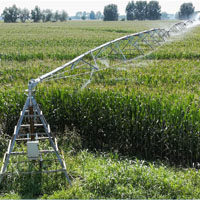Evaluation of ammonia emissions from filtration of digestate used for fertigation

Published:30 September 2021
Abstract Views: 1237
PDF: 555
HTML: 33
HTML: 33
Publisher's note
All claims expressed in this article are solely those of the authors and do not necessarily represent those of their affiliated organizations, or those of the publisher, the editors and the reviewers. Any product that may be evaluated in this article or claim that may be made by its manufacturer is not guaranteed or endorsed by the publisher.
All claims expressed in this article are solely those of the authors and do not necessarily represent those of their affiliated organizations, or those of the publisher, the editors and the reviewers. Any product that may be evaluated in this article or claim that may be made by its manufacturer is not guaranteed or endorsed by the publisher.
Similar Articles
- Giorgia Cocolo, Silvia Curnis, Maibritt Hjorth, Giorgio Provolo, Effect of different technologies and animal manures on solid-liquid separation efficiencies , Journal of Agricultural Engineering: Vol. 43 No. 2 (2012)
- Francesca Perazzolo, Gabriele Mattachini, Fulvia Tambone, Aldo Calcante, Giorgio Provolo, Nutrient losses from cattle co-digestate slurry during storage , Journal of Agricultural Engineering: Vol. 47 No. 2 (2016)
- Elio Dinuccio, Jacopo Maffia, Carla Lazzaroni, Gianfranco Airoldi, Paolo Balsari, Davide Biagini, Clinoptilolite (E567), a natural zeolite, inclusion in heavy-pig diets: effect on the productive performance and gaseous emissions during fattening and manure storage , Journal of Agricultural Engineering: Vol. 53 No. 1 (2022)
- Elio Dinuccio, Fabrizio Gioelli, Dalibor Cuk, Luca Rollè, Paolo Balsari, The use of co-digested solid fraction as feedstock for biogas plants , Journal of Agricultural Engineering: Vol. 44 No. 4 (2013)
- Mauro Podrecca, Alessandro Chiumenti, Francesco Da Borso, Marco Contin, Maria De Nobili, Reduction of odorous compounds emissions from swine slurry by electrolytic treatments and copper addition , Journal of Agricultural Engineering: Vol. 48 No. 1 (2017)
- Damiano Coppolecchia, Davide Gardoni, Cecilia Baldini, Federica Borgonovo, Marcella Guarino, The influence on biogas production of three slurry-handling systems in dairy farms , Journal of Agricultural Engineering: Vol. 46 No. 1 (2015)
- Yane Ansanay, Praveen Kolar, Ratna Sharma-Shivappa, Jay Cheng, Sunkyu Park, Consuelo Arellano, Pre-treatment of biomasses using magnetised sulfonic acid catalysts , Journal of Agricultural Engineering: Vol. 48 No. 2 (2017)
- Michela Zanetti, Benoît Brandelet, Diletta Marini, Andrea Sgarbossa, Chiara Giorio, Denis Badocco, Andrea Tapparo, Stefano Grigolato, Caroline Rogaume, Yann Rogaume, Raffaele Cavalli, Vineyard pruning residues pellets for use in domestic appliances: a quality assessment according to the EN ISO 17225 , Journal of Agricultural Engineering: Vol. 48 No. 2 (2017)
- Pasquale Dal Sasso, Giuseppe Ruggiero, Maria Antonella Ottolino, Giuseppe Verdiani, The role of agroforestry areas of the province of Bari in the absortion of carbon dioxide , Journal of Agricultural Engineering: Vol. 43 No. 1 (2012)
- Giuseppe Ruggiero, Giuseppe Verdiani, Stefano Dal Sasso, Evaluation of carrying capacity and territorial environmental sustainability , Journal of Agricultural Engineering: Vol. 43 No. 2 (2012)
You may also start an advanced similarity search for this article.

 https://doi.org/10.4081/jae.2021.1187
https://doi.org/10.4081/jae.2021.1187 






